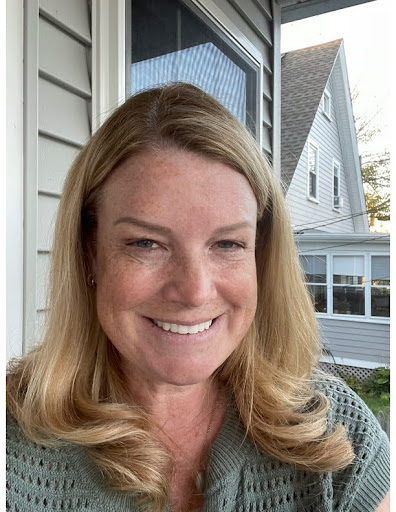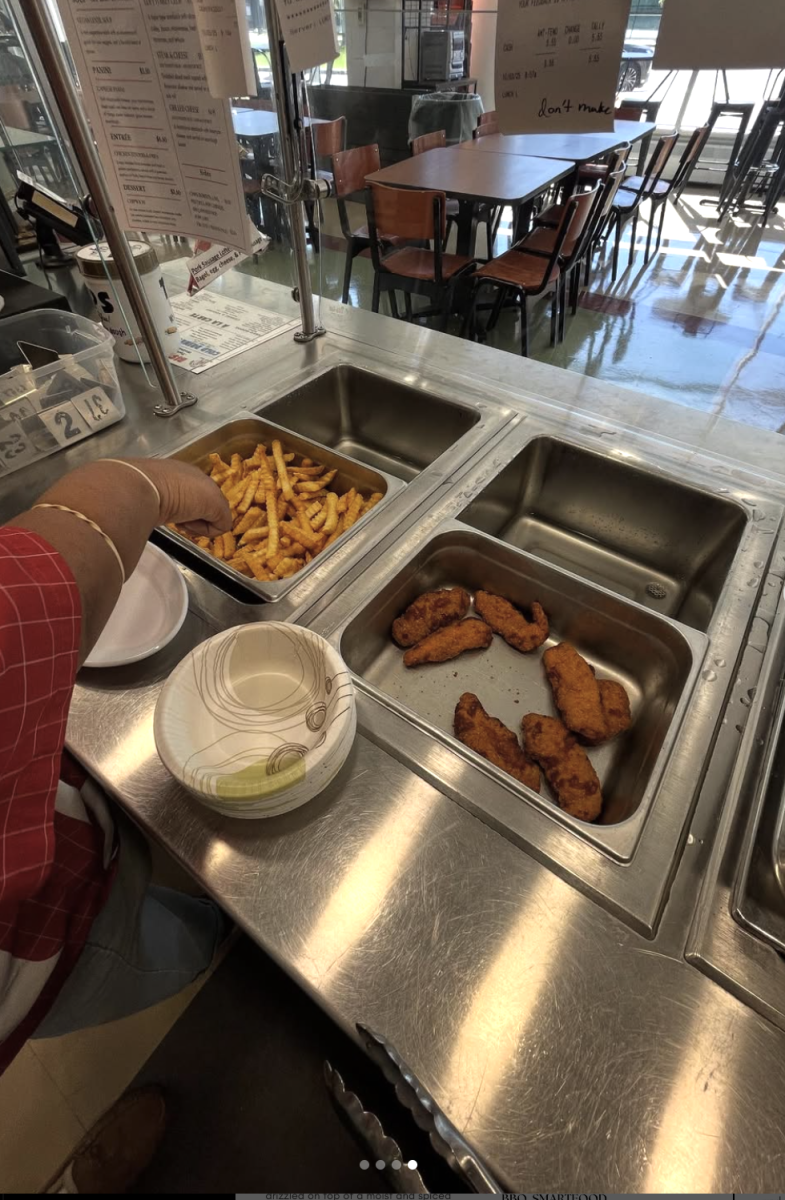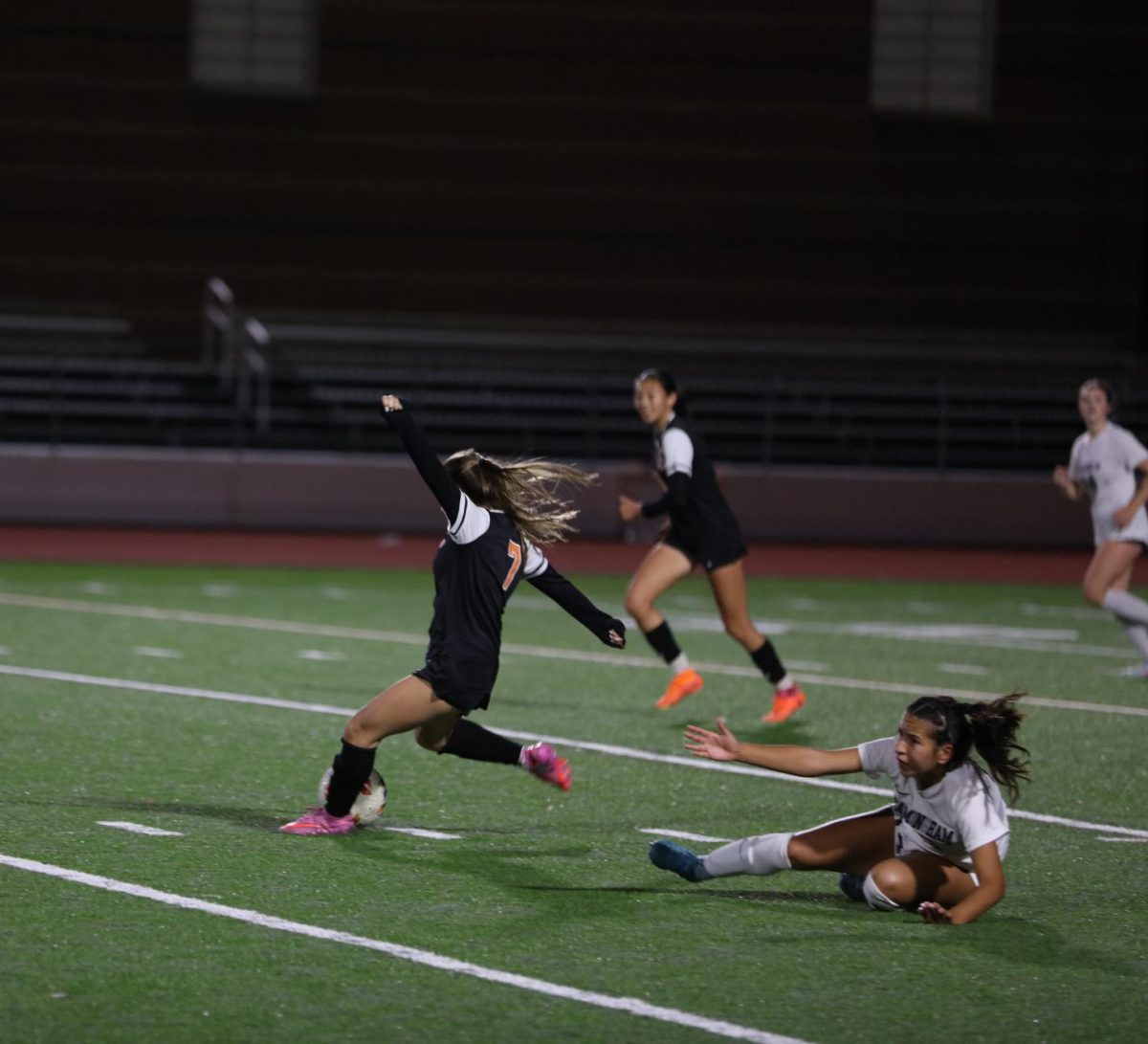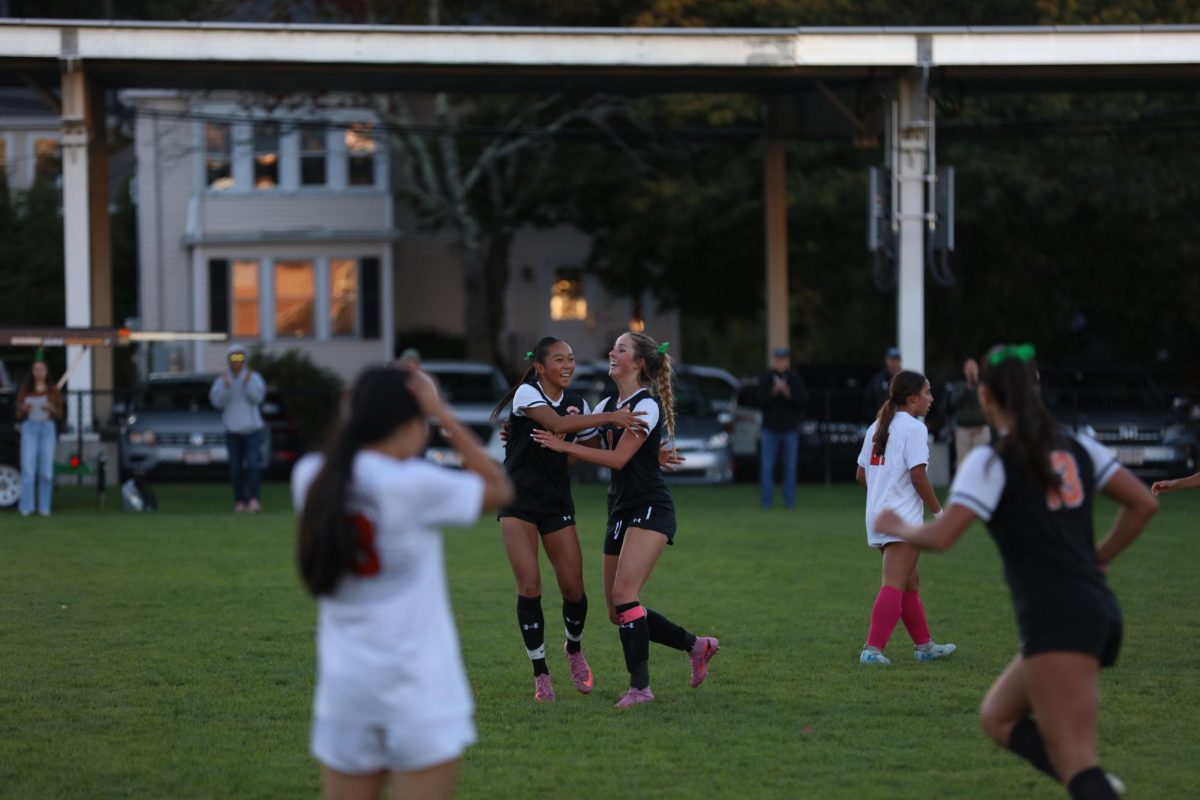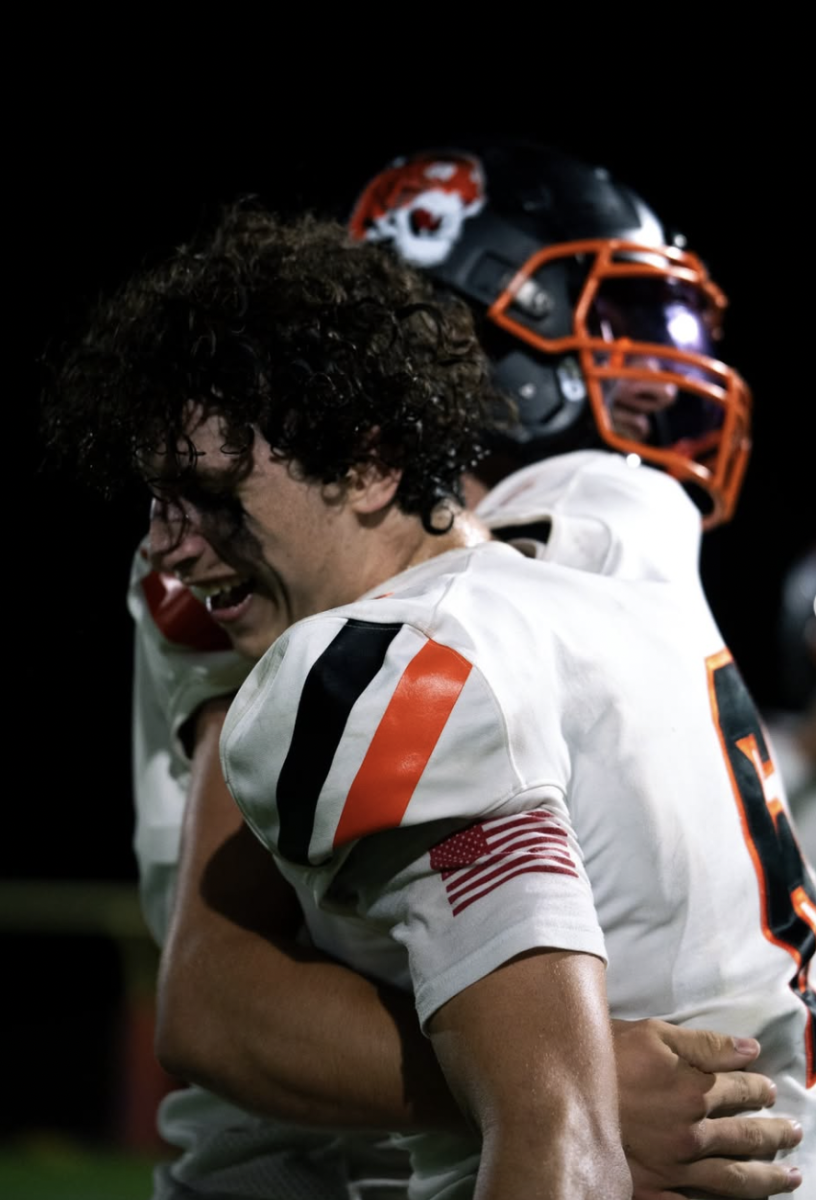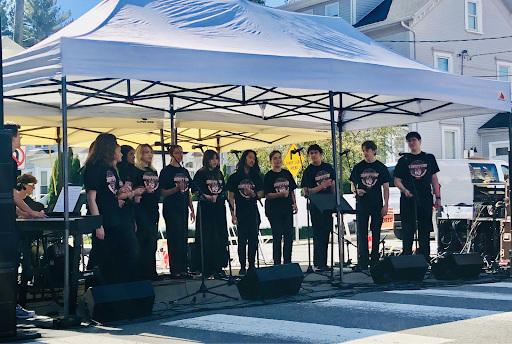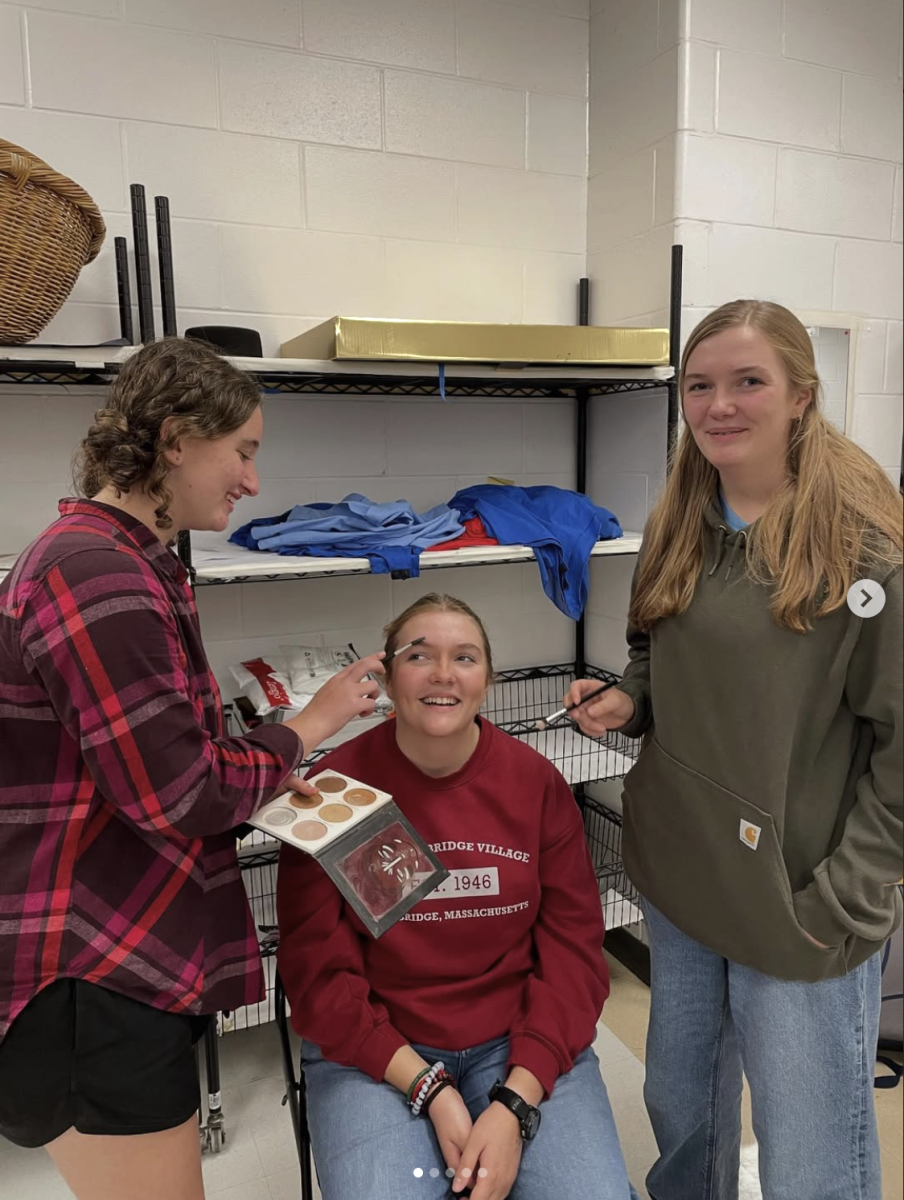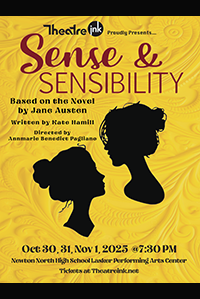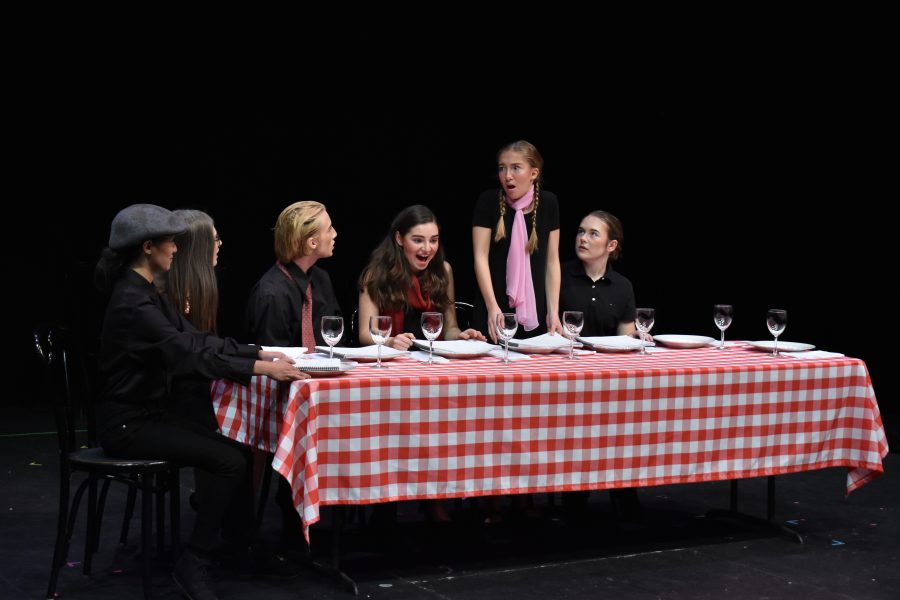Gingham covered a long dinner table in center stage. Italian restaurant music rang through the theater while students dressed as servers handed out the show’s pamphlet. For the next two hours, actors gathered around the table, ate, and left after being served their final meal.
The Big Meal, directed by seniors Rachel O’Brien and Emma Davis, ran Oct. 17 and 18 at 7:30 p.m. in the Little Theatre.
Throughout the show, the actors subtly held their scripts for the staged reading like menus.
“We only had four weeks, so if we had done it without scripts, it would have taken time away from working on character development and timing,” said O’Brien. “We did have to work with the actors a lot to have them not read the script. We wanted them to still connect on stage.”
Sam, a single man, played by junior Neva Hsu, sat at the table first along with Nicole, a waitress, played by junior Natalie Levinson. Their relationship starts as casual, but grows more serious the longer they are together. Later in the story, when they settle down into married life, the actors switch. Juniors Marley Craine and Dylan Fort walked on stage and represented a new chapter for the couple.
When a character enters a new chapter in their life, they are replaced by the actor playing that age. The story is developed by the character relationships and had no direct plot.
The way the show represents the generations forming together is masterful. When the actors switched characters, they changed scarfs, hats, ties, and necklaces to help the audience understand who they were playing. All actors wore black outfits as a base to make the accessory noticeable. For example, Nicole wore a red scarf throughout the show. Three different actresses played her and wore the red scarf.
“Creating a character with multiple people is something we tried to focus on, said Davis. “We had to make sure the actors and the audience knew who was who.”
As the story goes on, the chairs are added to the table or taken away to represent birth and death of different family members
Whenever a character died, the lights go blue and Lily Shi, a stage manager, walked out and read the stage directions.
“Some of the stage directions are written really well and it adds to the show to have them spoken. Those moments are really helpful,” said Davis.
The stage directions in the death scenes were poetic. They referenced the character finishing their food and then leaving with everyone else silent. When the lights turn blue, everyone in the audience sucked in a breath and watched as the character dragged their chair to the back of the room. Each stage direction added more depth to the story.
“Everytime I read the show or heard it on stage, something different registered to me,” said O’Brien. “When I first read it, I only understood the surface level. After that, I noticed things in the characters that hadn’t been there before.”
Overall, The Big Meal portrayed generations of a family in an authentic and thoughtful way.


